This post was originally published on the now sadly defunct awesome website The Toast in 2014. A reader suggested that I repost it on Lab Muffin… which I thought I did, but apparently that was all a fever dream. Here it is!
There’s soap in your mayonnaise!
As a scientist with a degree in chemistry, the surge in chemophobia over the last five years has been both baffling and frustrating.
While there are plenty of toxic substances that we should be well frightened of, there are also many safeguards against their use – by and large, the chemicals you encounter in your day-to-day life are benign, even the ones with the scary unpronounceable names and the ones made from substances that can literally chew your face off (sodium chloride, I’m looking at you). But it’s incredibly easy to fall into the trap of common-sense-based marketing. Scientific literature is not exactly reader-friendly, and scientists have a long history of alienating themselves from Normal People.
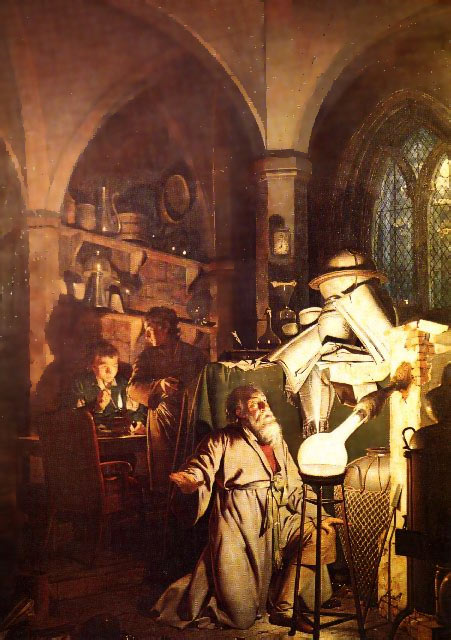
There’s one particularly painful tactic which anti-chemical lobbyists love to use, and that is the faulty generalization. You’ve no doubt seen it enough times already…
- “I had the flu vaccine and still got the flu, therefore vaccines don’t work.”
- “This chemical gave rats cancer in a study, we need to take it out of our shampoo/food/clothing!” (Despite the fact that the rats used in these sorts of studies are specifically bred to grow tumors like they’re going out of style, and to receive the amount the rats did, you’d have to mainline a swimming pool’s worth of shampoo/food/clothing every week.)
- “Mineral oil comes from crude oil, therefore you’re rubbing petrol on your face! Use our natural, organic face cream instead, because you know exactly what’s in it.” (Which is ironic, since natural products are notoriously variable in composition.)
- “It contains chemicals! Chemicals are bad.” (Except for the million or so chemicals that you unwittingly use every day to stay alive, like oxygen and water and neurotransmitters, one of which is pretty much MSG dissolved in water.)
To demonstrate how easy it is to make these grand leaps from benign facts to chemophobic, scaremongering argumentum ad Natural News, let me introduce you to my lovely assistant, surfactants, one of my favourite categories of chemicals (yes, chemists all have their favourite chemicals, it’s a disease.)
Chemicals can be roughly divided into two broad categories. On one side are the hydrophiles, which dissolve readily in water, and are highly charged, which lets them interact favourably with other highly charged things – common examples are water, salt, and ethanol (drinking alcohol.) On the other side there are lipophiles, which are oily, and tend to be weakly charged or neutral. The two don’t interact favourably enough to hang out together in a happy stable mix, and despite any amount of violent shaking, they invariably separate and go to their respective sides.
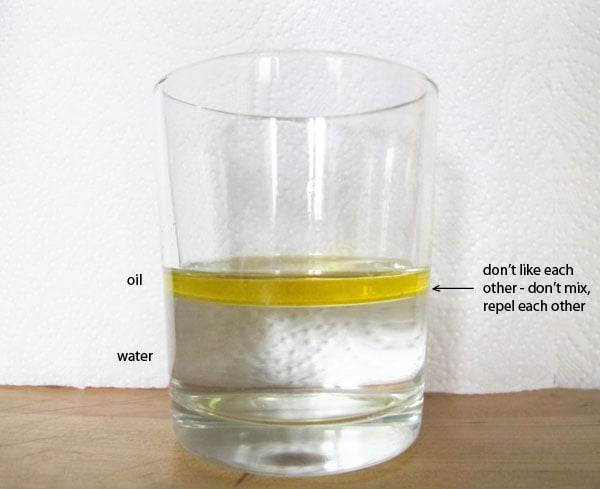
Surfactants are magic because they’re essentially the double agents of the chemistry world – a hydrophile and a lipophile chemically bonded into one neat package:
There’s the hydrophilic end which dissolves nicely in water and other hydrophilic chemicals, and a long fatty tail, which mingles with oily lipophilic substances. Since the hydrophiles and lipophiles repel each other, there’s a natural drive towards minimal contact. Adding surfactants reduces the repulsion (aka surface tension), which means it actually allows water to dissolve oil, or vice versa (depending on which one you have more of). The surfactant molecules surround the droplets of oil, kind of like a microscopic pin-cushion:
Since they’re such handy molecules, you can find surfactants everywhere. And now for my magic marketing trick! (I mean, illusion.) By simply conflating surfactants and their main use, soap, I will now proceed to warn you that soap is in absolutely everything, and we should all freak the hell out, NOW.
There’s soap in your soap (and detergents)
Soaps and detergents are almost all surfactant – they help lift oil from your skin (or clothes, or dishes) so it washes off into water.
There’s soap in your soap-free foaming cleanser
Believe it or not. Technically, soap is made from a strong alkali reacting with a fat, so as long as one of those components is missing, it can be labelled “soap-free,” regardless of whether it’s harsher or not. (Those “micellar cleaning solutions” contain surfactants too – they’re mild enough to be left on the skin without washing off.)
There’s soap in your mayonnaise…and your ice cream
To mix hydrophilic vinegar and lipophilic oil, the two undergo a frenzied tussle with the surfactant lecithin to form the stable goop that is mayonnaise. It’s the same deal with the dairy fats and water in ice cream – the lecithin stops your ice cream from becoming a field of ice crystals floating on syrupy cream (though that actually sounds like a Heston Blumenthal recipe.) Lecithin occurs naturally in egg yolks. Which brings us to…
There’s soap in your eggs
What the hell do they feed our chickens??
There’s soap in your clothes
Now here’s one that’s actually scary. Lots of delightfully slippery, everything-repellent stuff (Teflon, Scotchgard) is made of fluorosurfactants, which are the same as regular surfactants, except for the replacement of hydrogen atoms with fluorine atoms. The fluorine atoms are the same size, but are very densely surrounded by negatively charged electrons (this is known as electronegativity – fluorine is the most electronegative element). This means that it’s difficult for anything, hydrophile or lipophile, to shove the packed-in electrons around and cause temporary uneven charge (also known as London dispersion forces), making the surface even less easy to stick on. This is the usual situation:

The negative charge on the surface of the fluorosurfactant is too dense to displace effectively. It’s not entirely unlike trying to climb a wall made of squishy foam rubber, versus trying to climb a wall made of rendered concrete. This makes the fluorosurfactants’ tail end the complete diva of the chemistry world – too almighty to interact with either hydrophiles or lipophiles.
The polar end of the fluorosurfactant is what sticks it to a surface, covering the object with a bristly everything-repellent carpet and allowing Stephen Fry to enact witchcraft like so:
Now, the scary part – the fluorine atoms make the fluorosurfactants extremely stable, and they persist in the environment without breaking down into simpler substances. This would be fine, except that they’re likely to be pretty damn bad for your kidneys, lungs, reproductive system, endocrine system, and so on. They also bind strongly to proteins, and aren’t easily removed by your body’s natural excretion systems – one of the main offenders, PFOS, has a half-life in the body of over 5 years.
Sleep well.
(The older, more stable fluorosurfactants are currently being phased out in favour of newer, less stable fluorosurfactants – unfortunately, they’re also less effective. )
There’s soap in your lungs
Now for some good news: there are surfactants that we want coating our tender, squishy bodies! Your lungs are basically balloon-like sacks covered in water. Because of how much hydrophilic water loves itself and hates lipophilic air, there’s a lot of surface tension – the water wants to bunch up as much as possible, which translates to your lungs collapsing and requiring a lot of energy to inhale. Luckily, the body naturally synthesises pulmonary surfactants, which decreases water’s tendency to bunch up in the presence of air, allowing much easier breathing. (This is also the reason why you can blow bubbles with soap – the surfactant allows water to stretch, and not go back to the default bunched-up state as quickly as when you try to blow bubbles in water.)
Infant respiratory distress syndrome is a condition where inadequate amounts of pulmonary surfactant are present in a newborn’s lungs, and can be treated by (amongst other things) blowing some extra surfactant down their throats.
Well, actually…
There’s soap everywhere in your body
Every plant and animal cell is bursting with surfactants! Living organisms are complex machines which have both lipophilic and hydrophilic parts, and without surfactants holding us together we would just be one big film of oily goop sitting on top of a puddle of water.
Cell membranes are made up of surfactants known as phospholipids, which are arranged into two surfaces of pinheads facing the water, with a layer of lipophilic goo sandwiched with the lipophilic tails – this arrangement, which is in All Of The Cells, is known as a phospholipid bilayer.
(Actually, I lied – in some crazy bacteria-like microorganisms that live in incredibly harsh conditions called extremophilic archaea, they have a lipid monolayer instead of a bilayer, which is essentially just the two layers squished together with their tails chemically bonded, so the environment doesn’t just rip the microorganism apart like a piece of snotty tissue.)
*
That’s an awful lot of surfactants everywhere! We have the same class of chemical in all our cells as the chemicals synthesised (in a lab!) from petroleum to clean industrial tankers and stabilize toxic paints. It also happens to be from the same family as the naturally produced secretion that lets all the Earth’s creatures breathe vital oxygen. See what I did there? With the clever use of generalisations and vague language, it’s possible to be completely technically correct, while at the same time, implying something completely wrong and scary, or completely wrong and good. One tiny assumption can set off a chain that snowballs into a new Hell dimension of frothing bullshit.
How can you avoid it? Well, the best course of action is to understand the science behind the claim. But unfortunately we don’t all have the time to be completely informed on every aspect of all the products we use in our day-to-day lives. A more practical approach? Learn the basics, and then ask all the questions. Pester, pester, pester. Ask the seller. Ask Google Scholar. Ask your friendly local scientist, who will probably relish the opportunity to wax lyrical to an enthusiastic audience. Ask multiple scientists and watch them battle to help you understand. (I guess what I’m trying to say is, be my friend! I’m useful, sometimes!) Then compare the answers, and see which ones fit together to give a plausible explanation.
And the next time you have to choose between the plain product and the one that sounds like it’s been squirted straight from Mother Nature’s orifices, think about how much of that premium price goes to the marketing department.
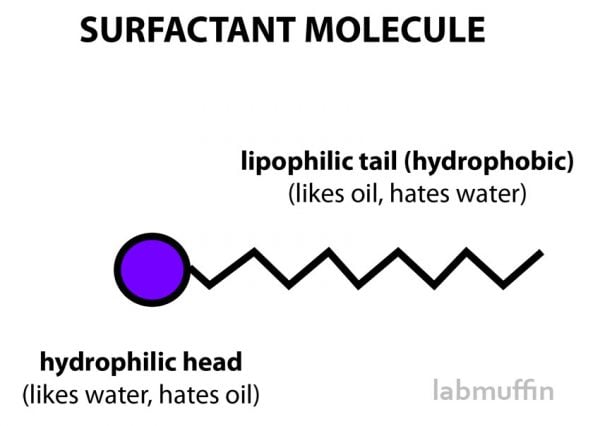
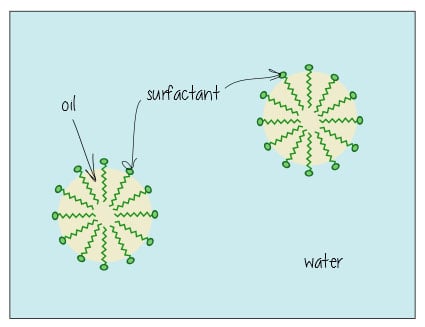
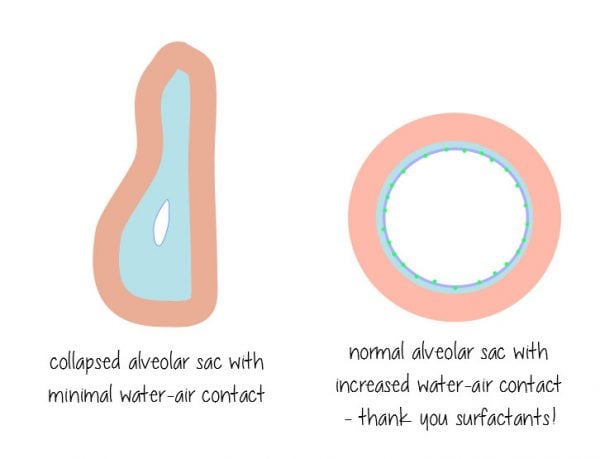
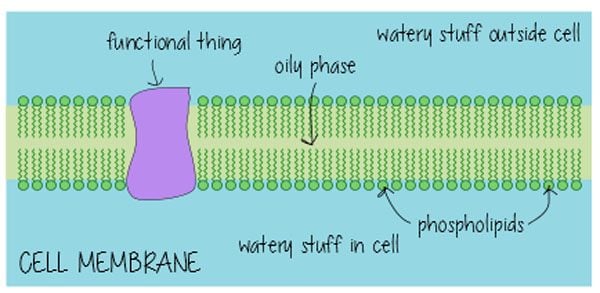





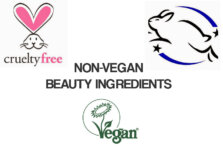
Thanks for this blog post! It is very informative. You remind me of my old chemistry teacher, who always criticised chemophobia.
MSG is monosodium glutamate, right? I don’t know if it’s a widely known abbreviation in English but I think your followers whose first language is not English would appreciate the clarification. MSG can mean totally different things in other languages and many of them use a word for sodium that starts with n.
PS: love your Instagram templates and your Guide to Basic Skincare. Keep up the good work 🙂
Loved the post. You are inspiring me to get to the depth of everything.
I just love this Chemist’s rantings, she is sooo practical
Hi Michelle
Thanks for the great post. It’s really fascinating for a non-science person like me to read. You always explain tricky concepts in such a simple and engaging way.
One small thing- the caption with the link to the ‘proving homosexuality is wrong’ page (good god, the mind boggles! Where do these nutcases get the nerve?!) reads a little ambiguously to me. Might it just be worth a second glance? I know this isn’t a ‘political’ space, but if it were my (excellent, meticulous) blog I’d want people to know I was an LGBTQ+ ally.
Thanks again for the great post!
That’s a good suggestion, thanks for pointing it out – I guess I’m lucky enough to live and socialise in circles where it’s pretty much unthinkable to NOT be an ally, and I sometimes forget that a lot of people don’t have that luxury.
Another reason we should lobby for an entirely new punctuation mark that denotes ‘this is a joke, dur’. I’ve been caught out by the old you-can’t-send-sarcasm-in-a-text conundrum so many times!
Anyway, love your blog. X
I miss the toast so bad 🙁
Great article!
Also everybody knows what MSG is, srsly
Someone posted a Collective Evolution article describing sunscreen as a “toxic death-cream” just the other day.
Glad there are people like you out there to spread around a little reason.
The sunscreen-phobia is really mind boggling!
Thank you for writing this!
So I have a mouth with bubbles after reading this because I read it verbally. Thanks for this party-esque knowledge!